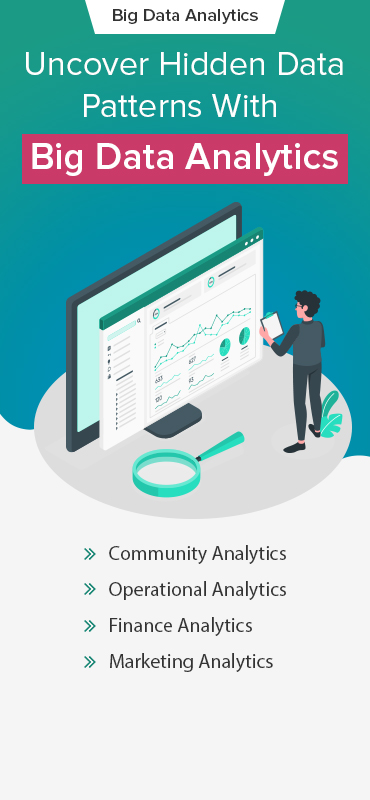Tableau Conference 2025 brought together data enthusiasts, analysts, and business leaders from across the globe to understand the changing dynamics of data visualization and analytics.
Held in San Diego, California, from April 15—17, the conference was packed with inspiring keynotes, networking opportunities, and product announcements.
Let’s look at the top highlights from Tableau Conference ‘25 (TC25) and get groundbreaking insights on data and AI innovations.
The conference kicked off with a visionary keynote by Ryan Aytay, President & CEO of Tableau, who set the tone for the week ahead with a strong message on the future of data and AI.
“At Tableau, we’re committed to helping people make real-time, data-driven decisions powered by generative AI,” he said. Ryan added, “As we enter the agentic era, every role—from data analysts to site admins—is evolving. Our tools must evolve too, alongside our people and organizations.”
Key Highlights From Tableau Conference 2025 (TC25)

Tableau Next Introduced — The World’s First Agentic Analytics Platform
At TC25, Tableau Next, the world’s first agentic analytics platform was introduced. It’s designed to bring the power of generative AI and automation directly into the analytics workflow.
Take a look at how Ryan Aytay explained its addition to Tableau’s portfolio:
- Tableau Next: A product built for the agentic era, where AI and analytics work hand-in-hand to drive smarter, faster decisions.
- Agentic Analytics: He positioned agentic analytics as a new paradigm. Analytics that not only informs but also empowers both human users and AI agents to access, interpret, and act on data in real time.
- The Open Data Layer: Tableau Next is built on the most open data layer, enabling seamless connection to any data source. Whether you’re an analyst, a decision architect, or even an AI agent, this layer serves as the fuel for actionable insights.
- AI Semantic Layer: A new AI-powered semantic layer sits atop the data layer to ensure data is harmonized and understood consistently across departments and roles.
- Modern Visualizations & Marketplace: Tableau’s iconic visual capabilities are being modernized. Visual assets are now reusable and shareable through internal and external marketplaces.
- Integrated Action Layer: Insights will no longer be tied to a single interface. The integrated action layer brings insights into where users work, whether in Tableau, Slack, Workday, or even on mobile devices, enabling in-the-moment decision-making.
- Unified Product Portfolio: Tableau Next isn’t a replacement; it’s an expansion. Ryan emphasized that Tableau Desktop, Server, Cloud, Prep, and now Next will exist as a unified, interoperable portfolio.
Devs on Stage at TC25
Devs on Stage is one of the most anticipated sessions at the Tableau Conference each year. It’s where Tableau developers themselves take the spotlight to reveal and demo new features, product innovations, and experimental ideas.
At TC25, the session was jam-packed with exciting upgrades and a peek into Tableau’s future. Here’s a breakdown of what was showcased:
Tableau Prep Enhancements
Tableau developers revealed major upgrades to Tableau Prep that make data preparation faster, smarter, and more connected.
- In-Database Processing
Instead of pulling data into memory (which is slow and costly for big datasets), Prep flows now execute directly in the database. This is similar to pushing the workload to where the data lives. - Custom Python Scripts in the Cloud
You can now embed Python scripts directly into Prep flows on Tableau Cloud. This will help you do complex calculations, machine learning steps, or cleaning logic, without needing a separate environment. - Output to Google Drive
Prep flows can now save results straight to Google Drive. This means you can make prepped datasets more accessible to business users or link them into collaborative Google Workspace workflows.
Tableau Semantics & Data Integration
Tableau is moving toward agentic analytics by building smarter ways to understand and use your data models.
- Semantic Connector
Tableau Semantics lets you bring in semantic models from Salesforce Data Cloud into Tableau, with all logic, relationships, and calculations preserved. - Published Data Sources in Semantics
You can now leverage your existing Tableau Published Data Sources inside the semantic model, without copying or migrating. This opens up these sources to be used by AI agents and Tableau Next experiences.
Visualization & Interactivity Upgrades
- Viewport Parameters
Developers demonstrated a new feature where the visible area of a map (the viewport) can dynamically update filters and calculations. As you zoom or pan, the dashboard reacts, filtering other elements based on what’s in view. - Analytics Pane Extensions
You can now drag and drop advanced analytics features (like trend lines, forecast bands, etc.) from a redesigned Analytics pane. - Dynamic Color Ranges
Colors in your visualizations automatically adjust based on the user’s current filter or selection, helping highlight trends in subsets of data more effectively. - Custom Color Palettes via GenAI
Use natural language to generate custom color themes. For example, you could type ‘a palette inspired by a sunset over a city skyline,’ and Tableau generates one for you.
AI-Powered & Smart Features
- Enhanced Q&A in Tableau Pulse
You can ask conversational questions, and Tableau Pulse returns answers with visuals, context, and even follow-up questions. It’s a step toward chat-based analytics for everyone. - “Choose for Me” in Show Me
In addition to recommending visual types from selected data, now you can pick a chart type, and Tableau suggests which fields to use and builds a viz automatically.
Dashboard Styling & Accessibility
- Rounded Corners
You can now round the corners of dashboard objects, giving dashboards a softer, more modern look. - Accessible Navigation & Actions
You can navigate dashboards and trigger actions entirely from your keyboard, improving usability for those with accessibility needs or users who prefer keyboard-first workflows.
Admin & Integration Enhancements
- SCIM Provisioning for Tableau Server
SCIM allows automatic user and group provisioning, eliminating the need for manual scripts or user-by-user setup. - Recycle Bin
You can now recover deleted projects, workbooks, or data sources from Tableau Cloud or Server for up to 30 days. - Activity Log Improvements
Tableau now captures user interactions, such as clicking, filtering, or exporting, in the activity log, helping admins and analysts trace behavior or troubleshoot issues. - dbt Connector
A new connector lets Tableau Cloud users tap directly into dbt models and metrics, bringing modeling best practices straight into Tableau dashboards. - Google Workspace Add-ons
Now you can embed Tableau dashboards into Google Docs and Slides with real-time data. Google Sheets support is coming soon to enable live Tableau insights in spreadsheet workflows.
Grazitti Interactive at Tableau Conference 2025—Booth Buzz & Highlights
At Tableau Conference 2025, Grazitti Interactive stepped in as Explorer Sponsors, bringing our passion for data-driven innovation to one of the world’s most anticipated analytics events.
We caught up with Sapna Gupta, Sr. Analytics Manager, Grazitti Interactive, after the conference to hear her thoughts.
We’re thrilled about the launch of Tableau Next featuring Agentic AI. This powerful new capability marks a major milestone in the evolution of data analytics. Agentic AI has the potential to revolutionize how we transform and interpret data, empowering us to deliver deeper, faster, and more intuitive insights for our clients”.
Reflecting on the benefits of Tableau Next, she said, “With its advanced natural language processing and AI-driven analysis, Tableau Next enables a more dynamic and accessible analytics experience, aligning perfectly with our goal of driving business value through innovation. We’re excited to leverage this cutting-edge technology to elevate our analytics solutions and help our clients unlock the full potential of their data”.
From unlocking the power of data storytelling to exploring the next frontier of AI-powered insights, our team was right at the heart of the action, diving deep into everything Tableau has to offer this year.
We connected, we explored, we inspired, and most importantly, we shared our vision of what’s next in analytics at our booth.
Expressing his excitement for the launch of Tableau Next and Agentic Analytics, Gagandeep Singh, Associate Analytics Manager, Grazitti Interactive, said:
Our Offerings at TC25
Omnichannel Analytics Solutions
One of the standout offerings at the booth was our Omnichannel Analytics Solutions, created to help organizations enhance ROI and foster stronger customer engagement. These solutions enable businesses to:
- Gain a unified customer view across channels
- Access cross-channel performance insights
- Optimize attribution and marketing ROI using AI
- Drive cost-efficiency with smarter budget strategies
- Enhance campaign impact with predictive analytics
Key Takeaways—Agentic AI and Tableau Next Will Redefine Business Intelligence
The Tableau Conference 2025 marked a major inflection point in the world of data analytics, ushering in what can only be described as the agentic analytics era. This unlocks a new paradigm where AI agents aren’t just assistants; they’re collaborators.
With the introduction of Tableau Next, manual, time-consuming BI processes are all set to be redefined and turn data into action. As the first truly agentic analytics platform, it’s open, API-first architecture and integration with Salesforce’s Agentforce create an end-to-end workflow engine that adapts to users’ needs.
The platform’s agents are equipped with advanced analytical capabilities and are constantly learning, adapting to user feedback, and collaborating with other agents to enhance decision-making at scale.
TC25 wasn’t just a showcase of new features; it was a glimpse into the future of analytics. A future where humans and AI work in parallel and insights flow effortlessly into action.
The age of agentic analytics is here, and Tableau is leading the charge.












